During the commercial dyeing process, toxic chemicals are released into wastewater which is commonly used in developing countries, for the purpose of irrigation in agriculture.
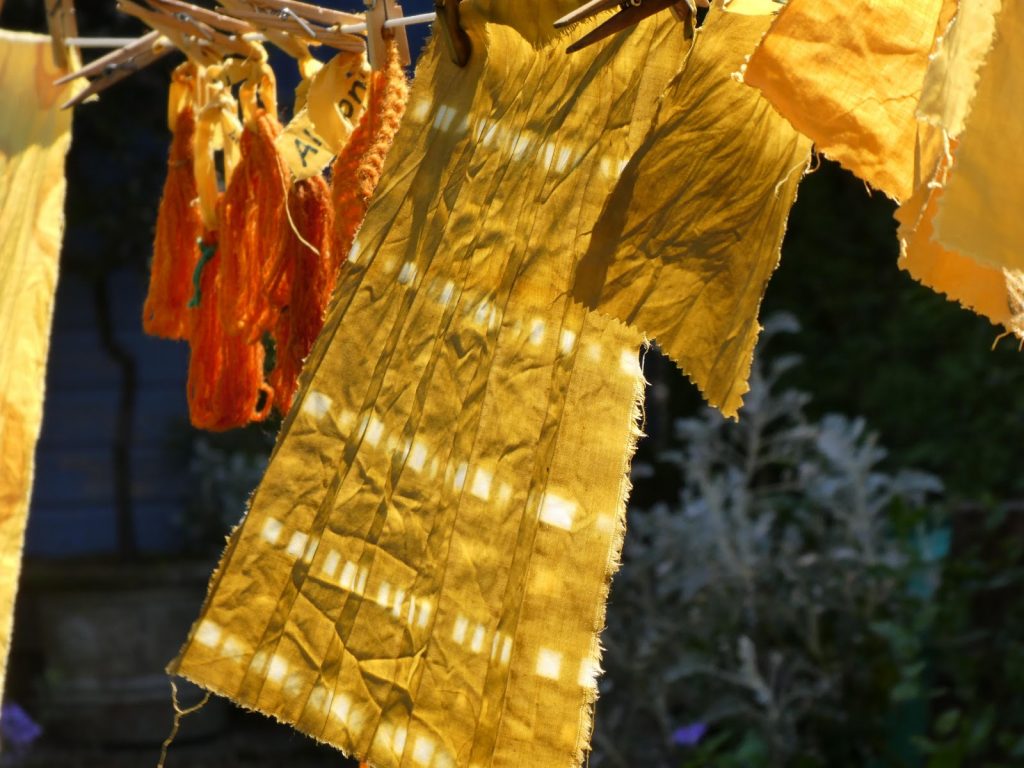
If you are not familiar with the basics of natural dyes, we recommend you to read our Natural Dyeing Notes here
Many people are familiar with the rich onion stain applied to eggs at Easter time. The wonderful pigment can also be applied to textiles and is an easily available resource that we can intercept before it reaches the compost bin. It can take a while to save up enough skins but easy if you ask your friends to help
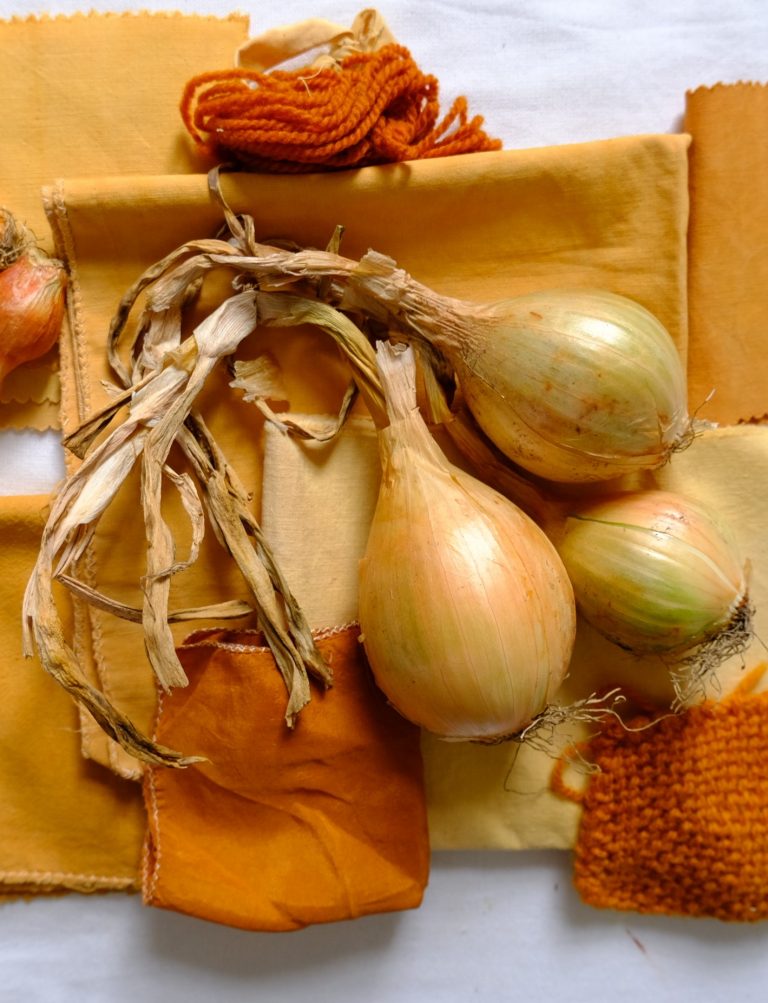
Step one
Weigh you cloth or yarn to be dyed. Then weigh out onion skins equivalent to half the weight of yarn or cloth (This should result in a very rich dye but great shades can be achieved with less). Add the onion skins to the dye pan, add water to fully cover dye materials plus 2-3 cm extra and leave to soak overnight – if possible.
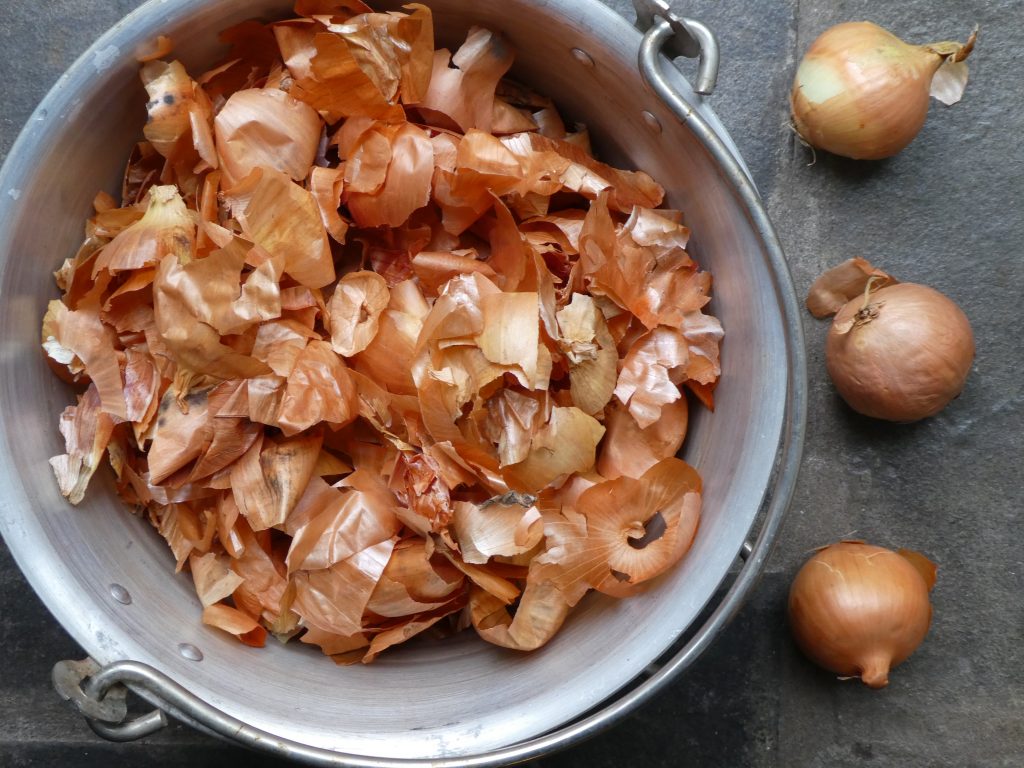
Step two
Slowly heat the pan until nearly boiling then adjust temperature to a very gentle simmer (you should just see a few bubbles coming to the surface).
Continue to gently simmer for about 1 hour and observe how the colour deepens. Then remove from heat and pulverise with a potato masher and leave to soak overnight.

Step three
The next day use your sieve, lined with the muslin or gauze, to strain the dye into a clean bucket. Clean out your dye pan and again strain the liquid for a second time, into the pan.

Using your Dye
When you are ready to dye you will need to add more water to your pan – enough for your yarn or cloth to move freely.
Thoroughly soak the fibre and add to the dye bath , preferably for at least 2 hours.
If using wool it is important the fibre is added to cold dye and then gradually heated. Plant based fibre can be added straight into warm or hot dye.
Maintain a low, gentle simmer for 30 mins – 1 hour.
Heat the dye very slowly, stirring regularly until a gentle simmer is reached.
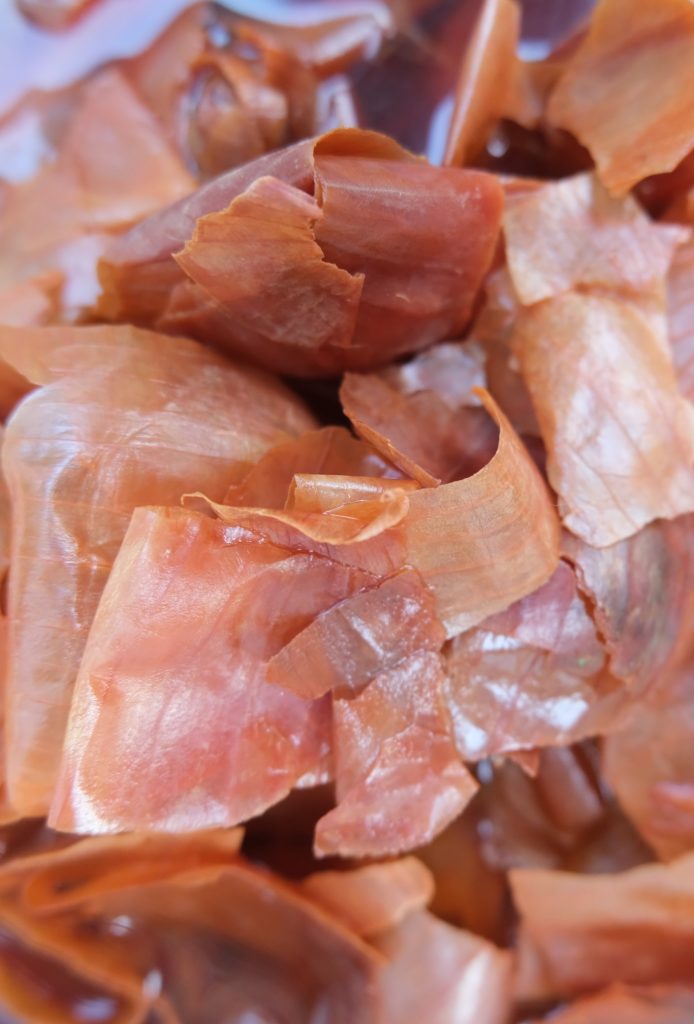
You can save the onion skins ( dried on in the freezer) to use another time as they will go on to release lots more pigment.
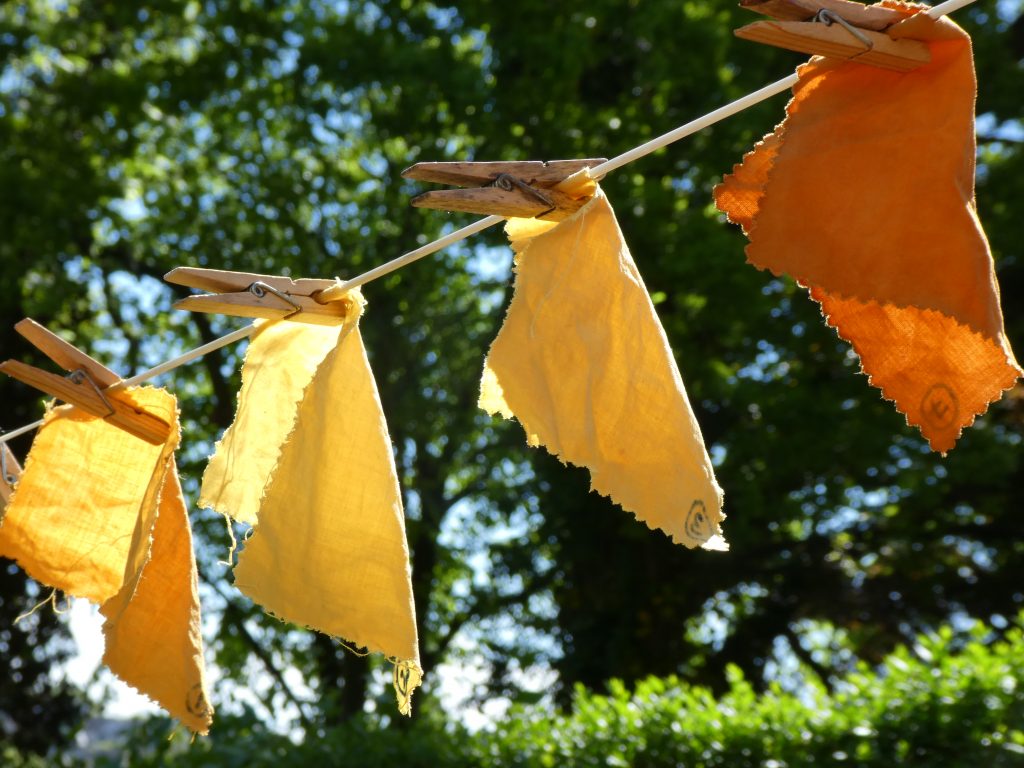
When you are happy with the colour – turn off heat and leave the item in dye to soak overnight. Remove from the dye bath and gently wring and leave to dry, out of direct sunlight
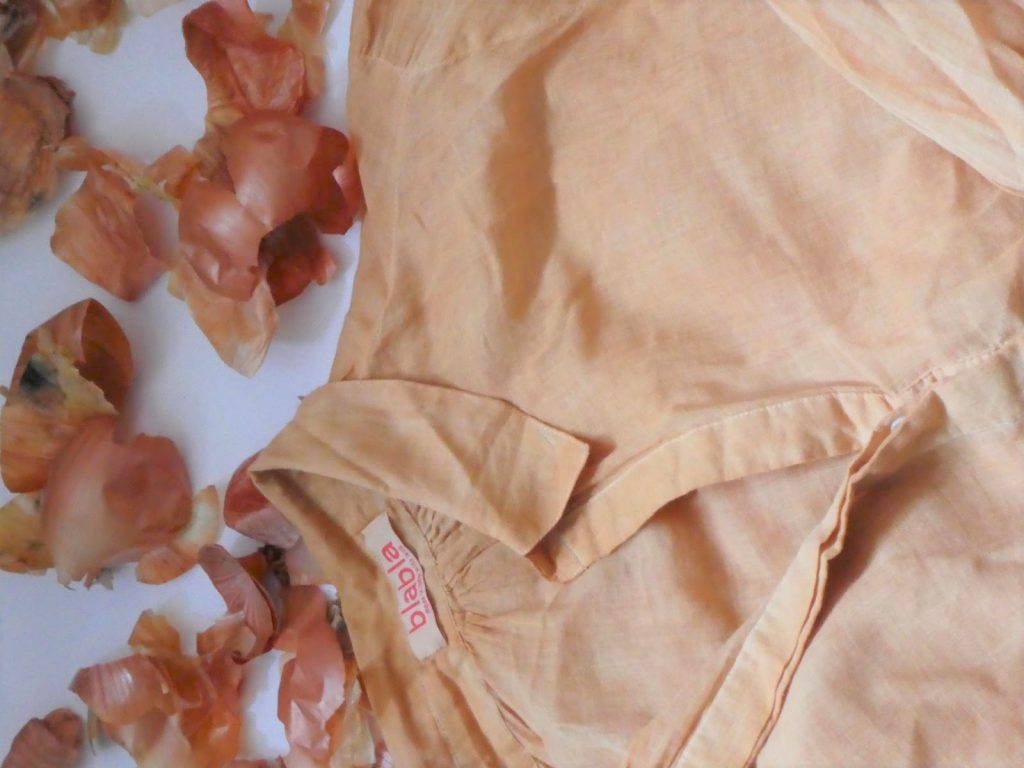

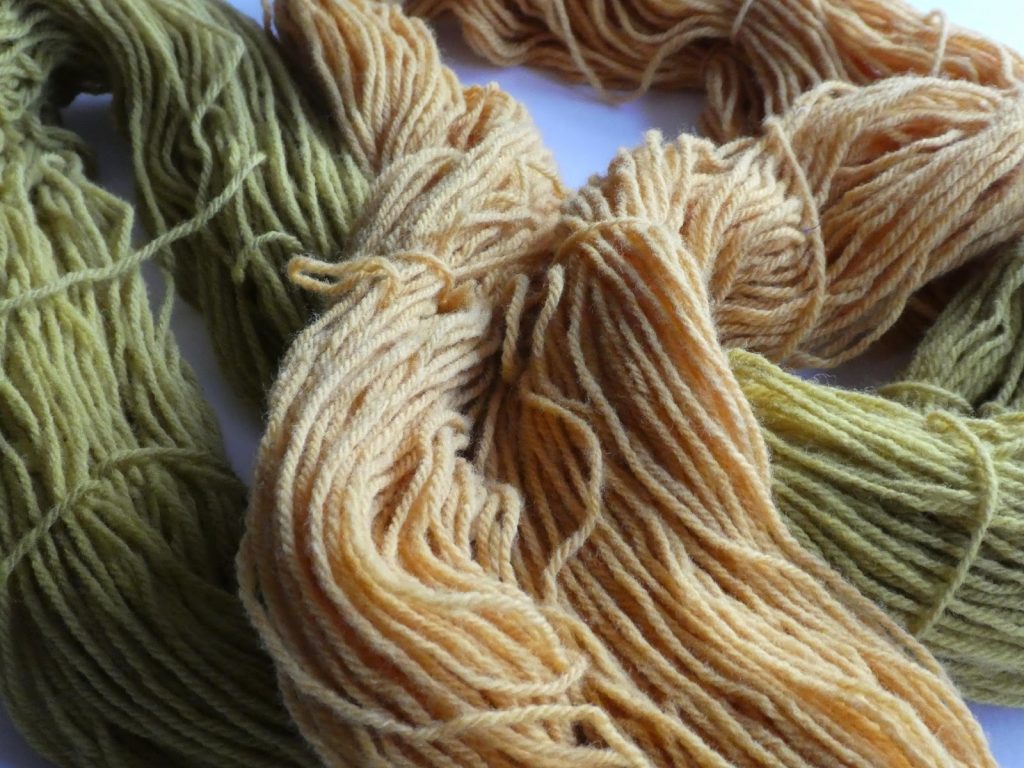
Notes prepared by Katrina Barnish for Sewing Café Lancaster
sewingcafelancaster@gmail.com